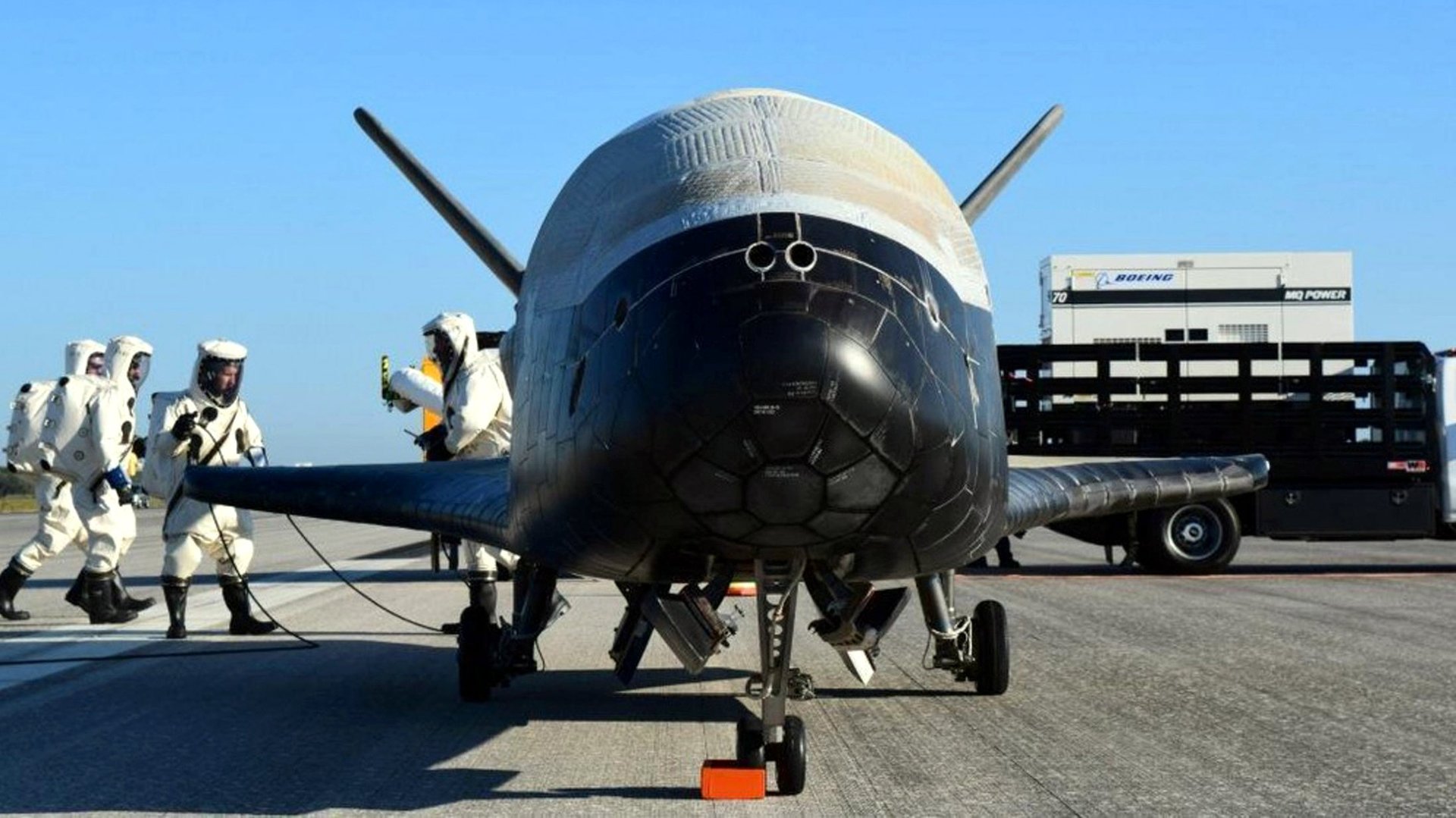The US Air Force wants to remind you (and China) that its secret space drone is back
One of the weirdest open secrets in space has come back to earth: The X-37B, an experimental US Air Force drone that looks and flies like a miniature Space Shuttle, landed at Kennedy Space Center on May 7 with a sonic boom that surprised local residents.


One of the weirdest open secrets in space has come back to earth: The X-37B, an experimental US Air Force drone that looks and flies like a miniature Space Shuttle, landed at Kennedy Space Center on May 7 with a sonic boom that surprised local residents.
The autonomous craft spent 718 days in space. Unlike its previous three trips, when the Air Force provided few details about its mission, this time military spokespeople can point to two totally not nefarious at all science projects.
While more speculative analysts suspect electronic espionage directed at Chinese spacecraft, the US Air Force says this is just a run-of-the-mill experimental craft designed to demonstrate reusable space technology can survive radiation, volatile temperatures and micro-asteroids.
“The landing of OTV-4 [the name of this mission] marks another success for the X-37B program and the nation,” Lt. Col. Ron Fehlen, the officer who manages the program, said in a statement. “This mission once again set an on-orbit endurance record and marks the vehicle’s first landing in the state of Florida. We are incredibly pleased with the performance of the space vehicle and are excited about the data gathered to support the scientific and space communities.”
This flight featured the test of an advanced US Air Force engine, designed to propel spacecraft using thrusters powered by electrically charged particles, as well as a NASA experiment to evaluate how dozens of different materials withstand long-term exposure to space.
The fourth flight of the Boeing-built spacecraft began with a launch on May 20, 2015. To reach space, the X-37B flies inside a faring—an aerodynamic nose cone—on top of an Atlas rocket, built by the Boeing-Lockheed Martin joint venture United Launch Alliance.
On landing, however, it flies back through the atmosphere like a plane, landing on the enormous runway at Kennedy Space Center where its predecessor, the Space Shuttle, would land when it was in regular service.
Despite the secrecy around the project’s purpose, the US Air Force regularly releases video and imagery of the craft to the media, and there is an enormous “Home of the X-37B” sign on the outside of Boeing’s facility at KSC.
There is rising interest in how low-cost access to space will effect national security—in brief: It could be very destabilizing indeed if new players and advanced weapons become feasible thanks to reusable rockets. The US putting its own secret space project on full display should be taken as an advertisement of American capabilities in space. Amateur astronomers (and no doubt other governments) have tracked the X-37b as it changes orbits, appears to track other satellites or maintains a stable orbit over a specific part of the globe.
Even as Russia and China surreptitiously test anti-satellite weapons, the US is reminding them that it has a maneuverable spacecraft capable of hanging out quietly in orbit, shadowing their space assets, and doing, well, who knows what?